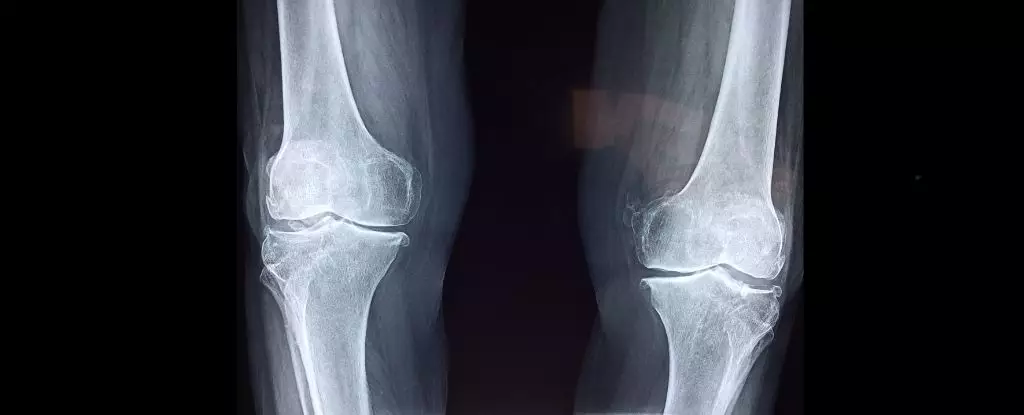Osteoporosis is often referred to as a silent disease because it typically manifests without noticeable symptoms until a fracture occurs. This degenerative bone condition leads to significant decreases in bone density and strength, resulting in bones that are fragile and more susceptible to fractures. The most commonly affected areas are the spine, hips, and wrists. According to the National Osteoporosis Foundation, over 10 million individuals in the United States are affected by osteoporosis, and an additional 43 million suffer from low bone mass, which increases the risk of developing the disease. Projections suggest that by 2030, the number of adults with osteoporosis or low bone mass could soar to 71 million, reflecting a more than 30 percent increase.
Understanding the Risk Factors
The upsurge in osteoporosis cases can be attributed to various lifestyle factors, including smoking, sedentary living, and excessive alcohol intake. Additionally, an aging population and a general lack of awareness about the disease contribute to its prevalence. This knowledge can be disheartening for older adults, especially since they are at an increased risk. However, it is crucial to remember that osteoporosis is not an inevitable part of aging. With effective preventive measures, individuals can maintain bone health throughout their lives.
Even though osteoporosis develops silently, subtle indications can signal weakening bones. Fractures are the most severe consequence of osteoporosis and can lead to chronic pain, hospitalizations, and even a decreased quality of life. Research indicates that globally, osteoporosis results in nearly 9 million fractures annually—approximately one fracture every three seconds. Minor bumps and falls can precipitate these fractures, particularly in the hip, wrist, and spine.
Height loss can also indicate possible vertebral compression fractures associated with osteoporosis. While it is normal for individuals to gradually lose some height with age, those with osteoporosis might experience a loss of two to three inches more rapidly due to multiple spinal fractures. Changes in posture, especially a hunched back, may signal diminishing spinal strength, and persistent back pain could result from microfractures within the vertebrae.
While osteoporosis cannot be completely reversed, specific lifestyle choices and dietary components can help mitigate risk. Calcium and vitamin D are vital for maintaining healthy bones. Calcium strengthens bones, while vitamin D fosters the absorption of calcium into the body.
It is recommended that women over 50 and men over 70 consume at least 1,200 milligrams of calcium daily, preferably through food sources such as dairy products like milk, yogurt, and cheese, which are abundant in calcium. For those following a vegan diet, alternative sources include certain plant-based foods such as kale, almonds, beans, and fortified products. Additionally, adults should attempt to include two to three servings of calcium-rich foods daily to optimize absorption.
Vitamin D is mostly acquired through sunlight and supplements. A few minutes of sunlight exposure several times a week is generally sufficient to meet the recommended levels. However, factors such as geographic location and skin pigmentation can impact how much sunlight is effective for vitamin D synthesis. Individuals diagnosed with osteoporosis may require supplements to ensure adequate levels of both nutrients.
Incorporating regular exercise into one’s routine is an effective strategy for bolstering bone health and preventing osteoporosis. Weight-bearing activities such as walking, dancing, and jogging are especially beneficial for enhancing bone density. Strength training exercises can improve stability and flexibility, reducing the risk of falls.
A minimum of 30 minutes of weight-bearing exercise should be targeted at least four times a week, alongside muscle-strengthening activities for at least two days. This is particularly crucial for women who may experience increased bone density loss during and post-menopause. Starting an exercise routine before menopause can set the groundwork for healthier bones later in life.
Negative lifestyle choices, such as smoking and high alcohol consumption, should be avoided as they can significantly diminish bone density. Additionally, adopting balance training and fall prevention strategies can further help reduce fracture risks.
Screening and Diagnosis
Regular screening for osteoporosis is vital, particularly for women starting at age 65. Men with risk factors such as smoking or a history of chronic diseases should also consider screening, especially those over the age of 70. Techniques such as bone density scans and X-rays are commonly used to diagnose the condition and assess any existing bone loss or fractures.
Effective management of osteoporosis requires ongoing engagement in healthy lifestyle changes. Recognizing early warning signs and proactively addressing them is essential for preserving bone health and preventing the onset of osteoporosis. With the right awareness and dedication to maintain bone integrity, individuals can successfully mitigate the risks associated with this silent but significant health challenge.


Leave a Reply